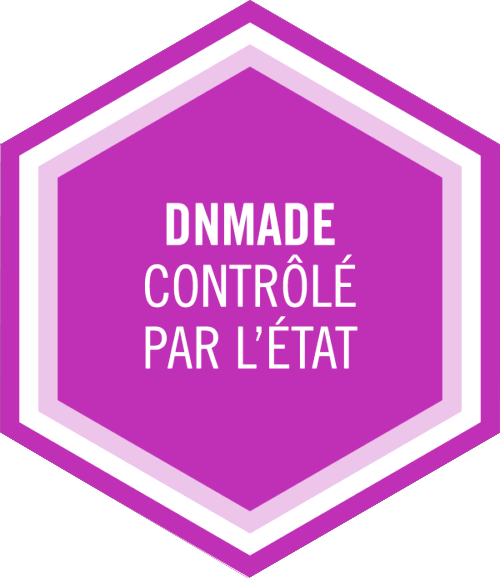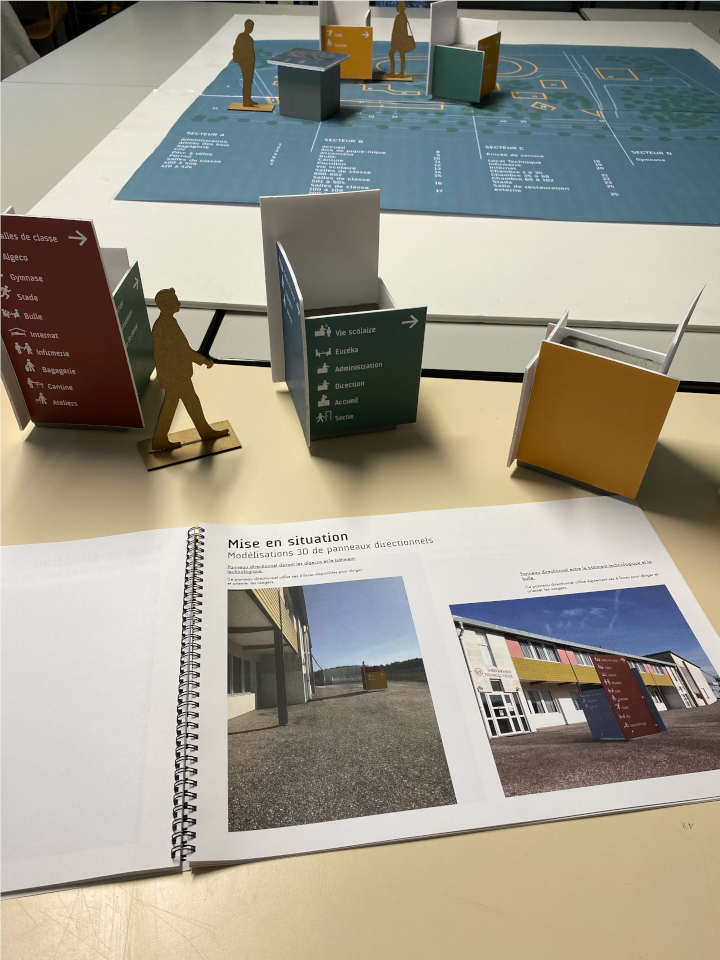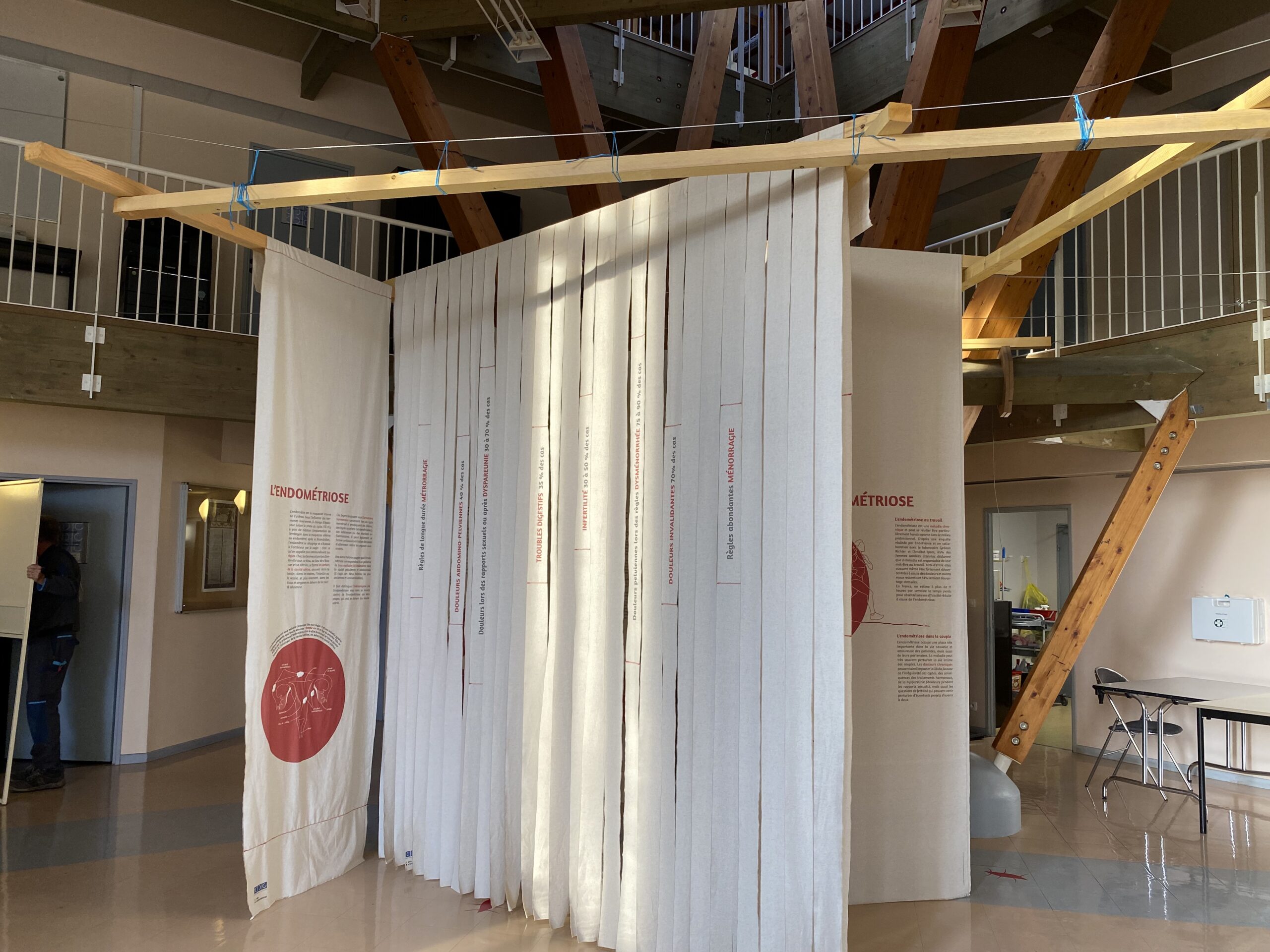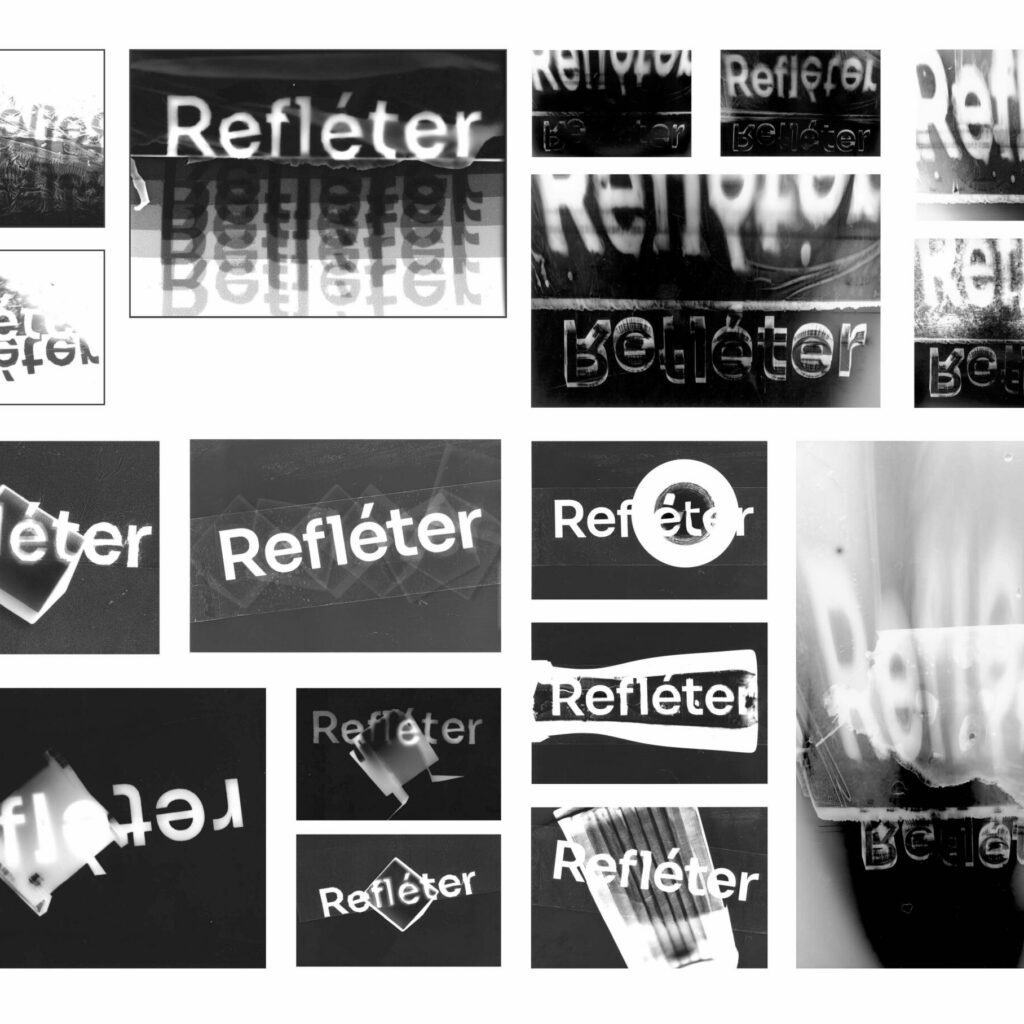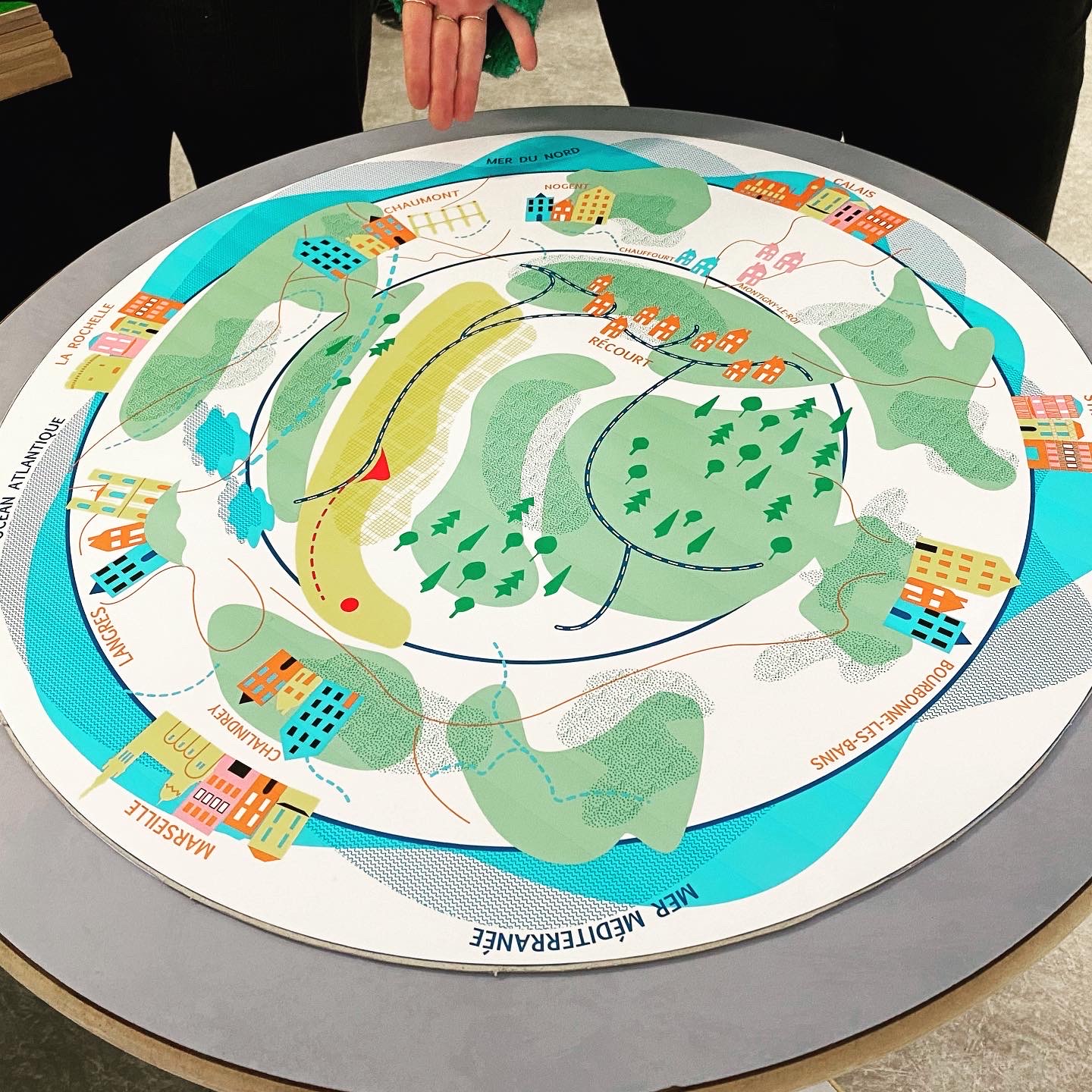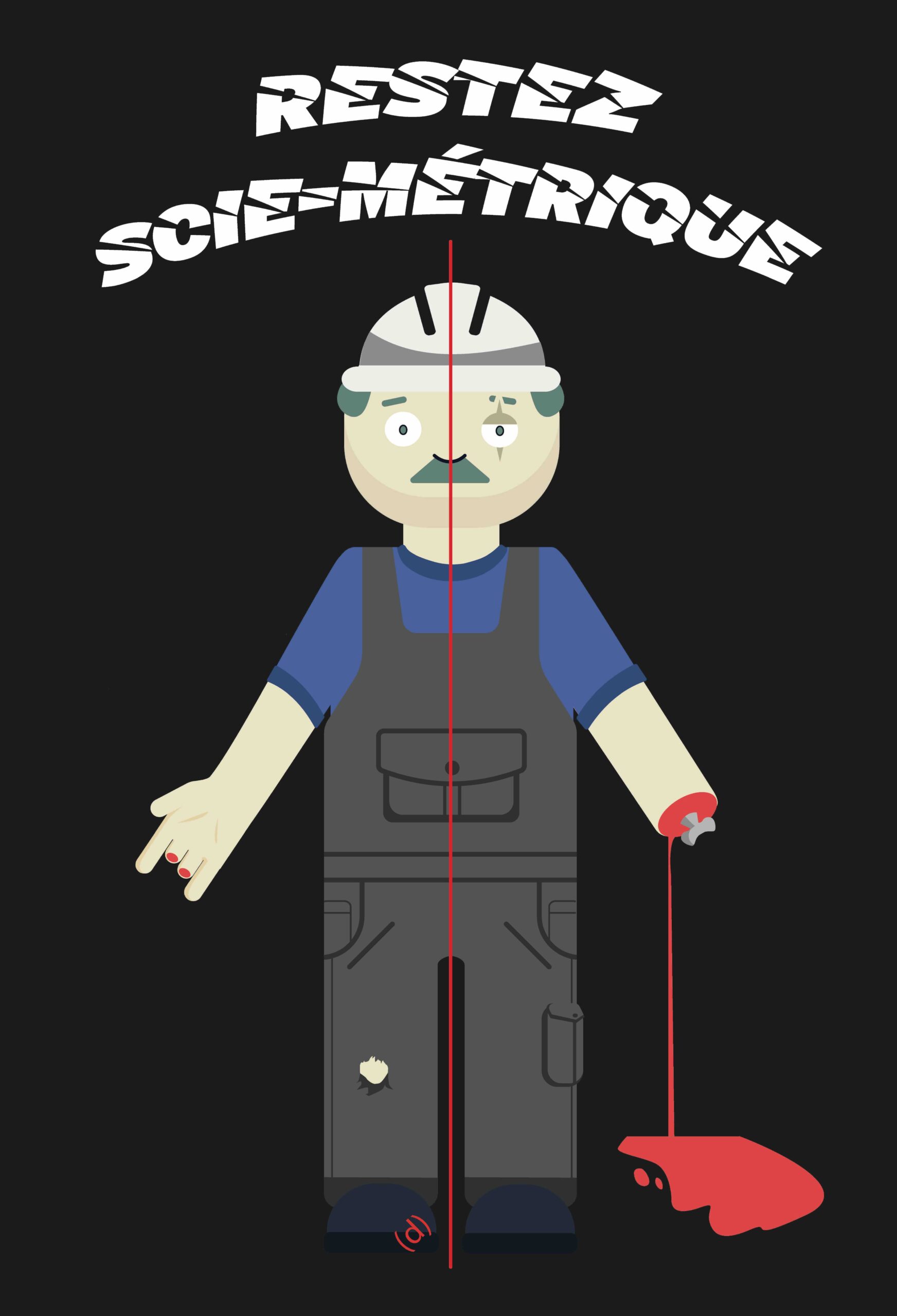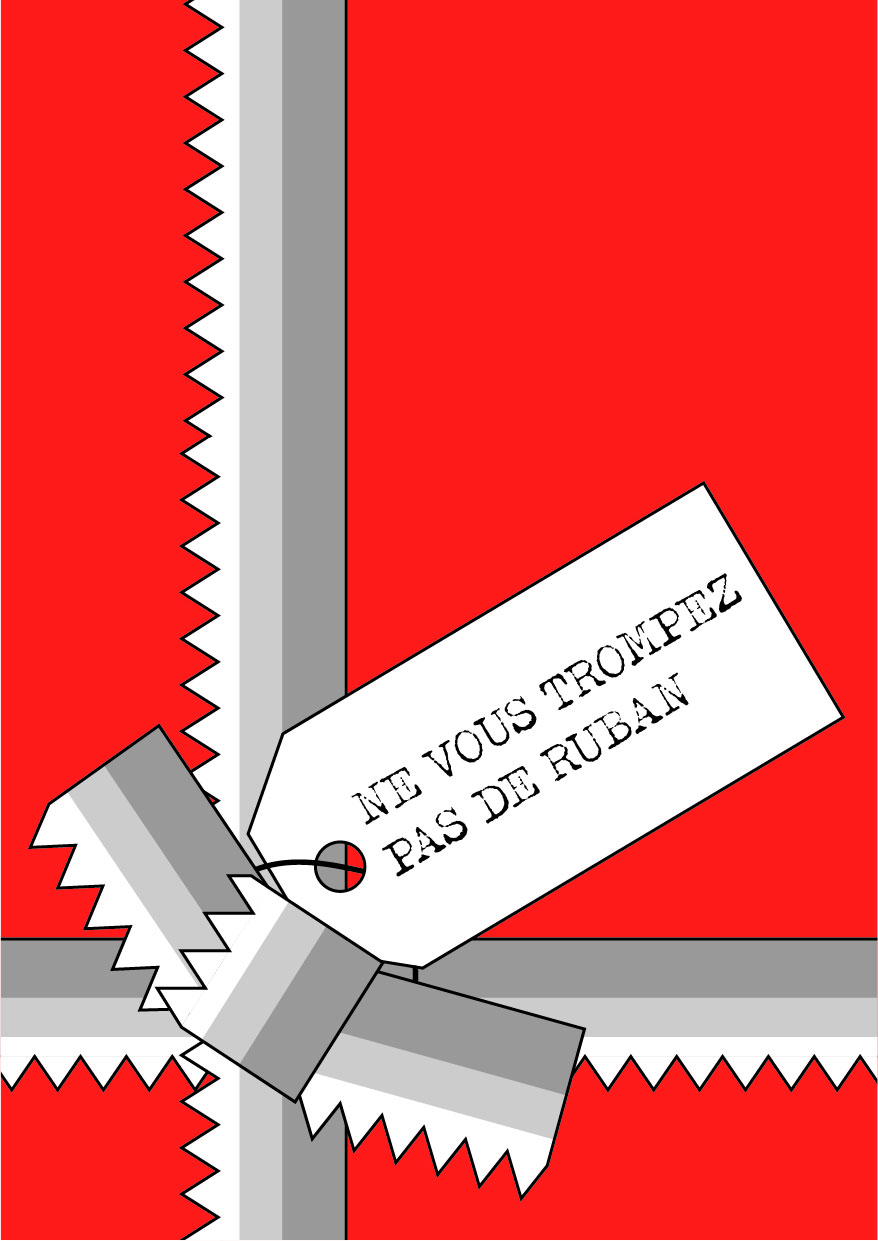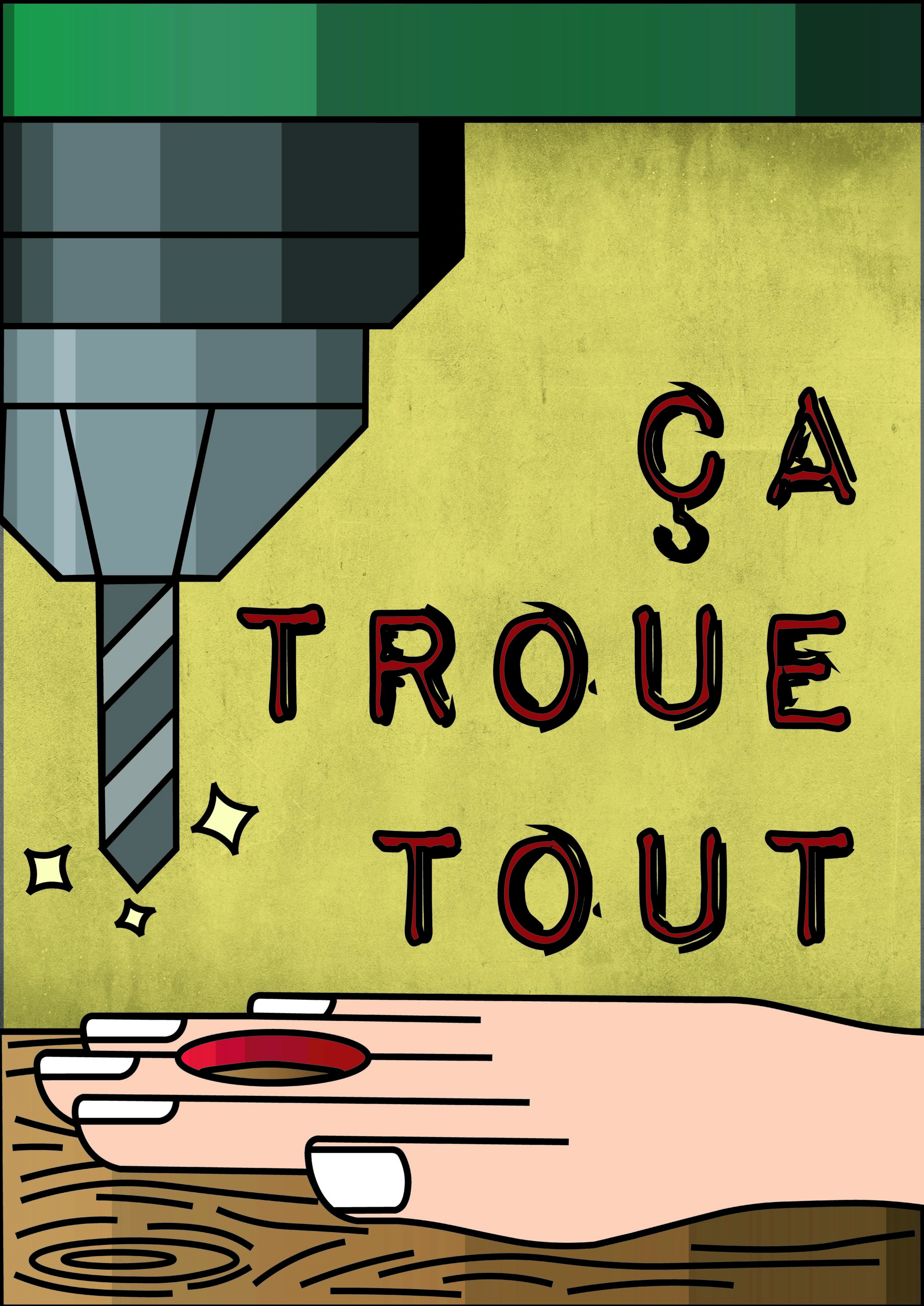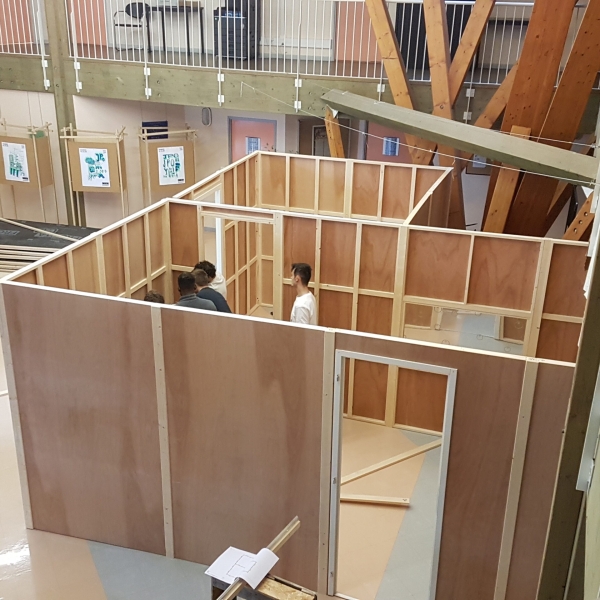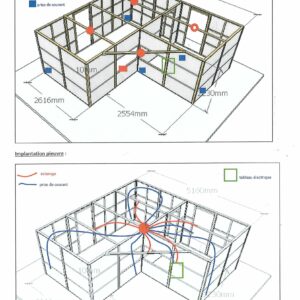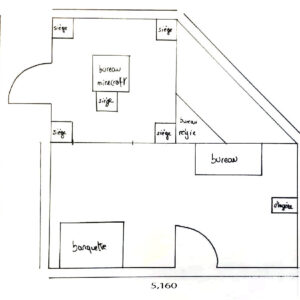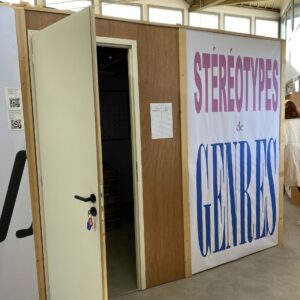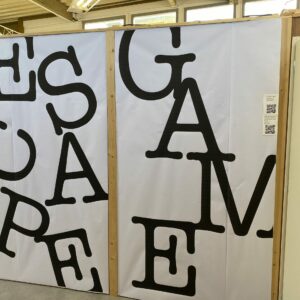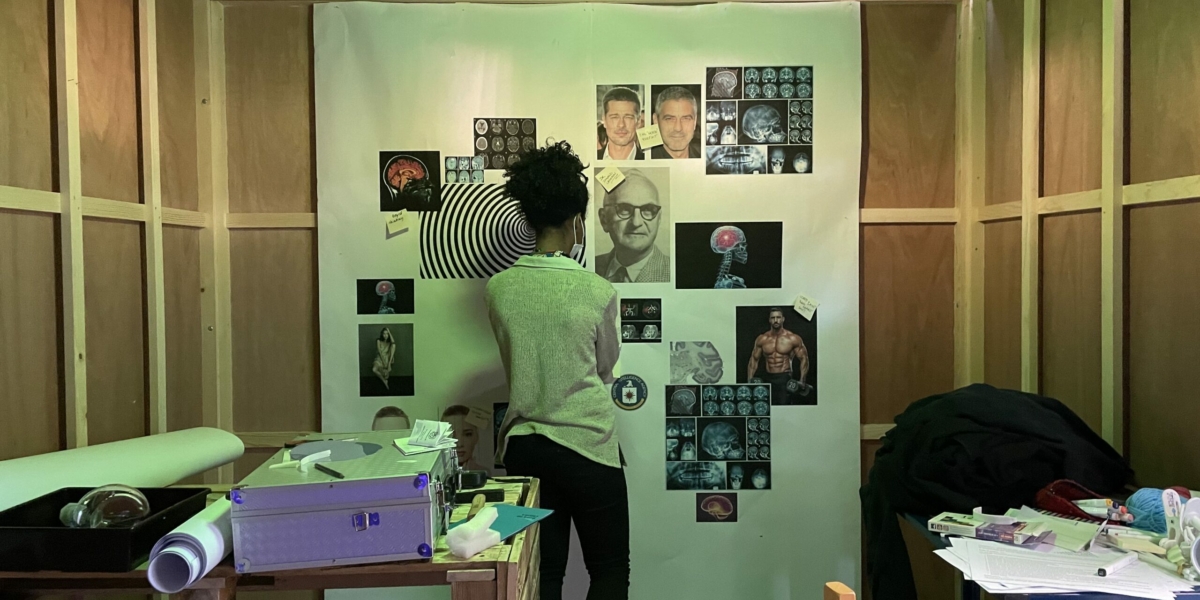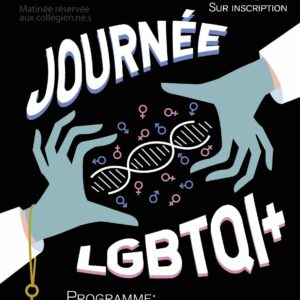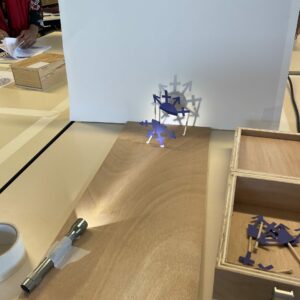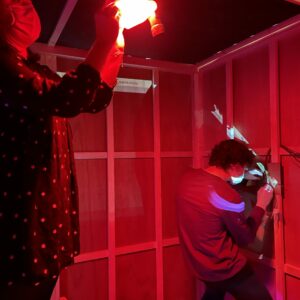> Registration
Charles de Gaulle High School invites you to submit your application on the platform.
Parcoursup.
The speciality
Scenography has been a field of graphic design for a very long time, particularly in the cultural field, and in symbiosis with the elements of Signage. These elements are defined by three main functions: to identify, to orientate and to inform.
The scenography of cultural and institutional exhibitions creates a narrative to involve the user, the spectator, by proposing a specific route. It manages the movement of users through a number of fixed or animated visual cues (images and/or typography).
This course is part of a school accredited for graphic design and wood processing, enriched by an Applied Arts course from the Bac STD2A to the DSAA and a professional technical platform.
Specific skills in typography, still and moving images, laser cutting, vinyl cutting, video mapping (visual animation projected onto relief structures) and 3D modelling are gradually acquired, with the emphasis on exploring and combining these methods.
The course is structured around the dynamics of the design project, which involves processes of analysis, conceptualisation and research, with the Creative Workshops as the focal point. This dynamic is based on the development of a critical distance, teamwork and the student’s personal commitment.
The projects focus on printed and/or digital products and media: signage objects that can take the form of illuminated and/or connected or stage displays, in a variety of museum, institutional, urban and/or landscape spaces, etc.
This spatial practice of graphic design also involves interaction with the performing arts and all the public spaces that today raise questions about the sharing of information, our relationship with others and our way of inhabiting space.
The course
This course trains graphic designers who are aware of the 3rd dimension and the role of the user. Our living spaces are being decompartmentalised, and our immediate environment is becoming a place of multiple interactions, information and transmission… a shared space that questions notions of orientation, pathways and living together.
The content of this course enables students to acquire methodological, technical, theoretical, strategic and practical skills, and focuses on creativity, culture, critical thinking, teamwork and mastery of graphic and visual languages.
During their studies, students will also meet professionals who will share their experience through placements, conferences and workshops, and help them to develop a professional approach.
Complementary practices will also enrich their course (screen printing, engraving, bookbinding, silver and digital photography, video, etc.).
The curriculum
The programme is developed over six semesters as follows :
- The first two semesters enable students to acquire fundamental conceptual, artistic and technical tools.
- In the third and fourth semesters, students are encouraged to delve deeper into their specialities. They work out the issues, develop a range of concrete hypotheses and experiment with the various stages of the project approach, either individually or as part of a team. At the end of the 2nd year, students undertake a work placement lasting at least 3 months.
- The fifth and sixth semesters are devoted to perfecting the specialities of the programme.
Skills are assessed throughout the learning process. Teaching units are assessed by continuous assessment based on structured skills.
In the third year, the dissertation and project are assessed at a final presentation before a jury.
Further study
The LICENCE grade conferred by the diploma gives access to level 6 diplomas :
- Master's degree in design from a university or the Ecole Normale Supérieure (ENS) Paris-Saclay;
- Diplôme supérieur d'arts appliqués (DSAA) from the lycées and écoles supérieures d'arts appliqués (ESAA Boulle, ESAA, Duperré, ESAIG Estienne, ENSAAMA, ESAAT Roubaix);
- Diplôme national supérieur d'expression plastique (DNSEP) from art and design schools (ESAD);
- Master's degree in teaching, education and training (MEEF) from the Institut National Supérieur du Professeurs et de l'Education (INSPÉ);
- A state diploma in architecture (DEA) or landscape design (DEP);
- A diploma from the Ecole Nationale Supérieure de Création Industrielle (ENSCI), the Ecole Nationale Supérieure des Arts Décoratifs (ENSAD) or the Institut National du Patrimoine (INP);
- Masters and DU (university diploma) in France and abroad.
Career opportunities
Graduates of the DNMADE Graphic Design, specialising in Signage and Scenography, will be able to work as graphic designers, craftspeople or freelance technicians, employed by a company, within various professional structures :
- Independent design agency,
- Design department within a company, institution or local authority,
- Independent craft production company,
- Craft or industrial production department of a company or local authority.
It provides access to various professional sectors :
- Artistic direction,
- Design and production of goods and services,
- Manufacture and restoration pertaining to the crafts sector,
- Teaching and research.
Expectations
- A good level of general knowledge and an openness to the arts, sciences and technology.
- Demonstrate sensitivity to social and environmental issues and to innovation.
- Demonstrate an interest in applied creation in its various artistic, technological, societal and environmental aspects.
- be able to use oral, written and/or graphic expression skills to argue and communicate ideas.
- Ability to adapt and organise.
- Ability to work independently and as part of a team.
- An interest in graphic and digital tools and their uses.
- A willingness to share and work collaboratively.
- Demonstrate motivation, curiosity, openness and the ability to listen, question and think critically.
Escape Game - gender stereotypes, 2022
The Escape Game is a fun and innovative entertainment concept accessible to everyone. Participants are locked inside a themed room and have to try to get out in less than 60 minutes, in this case less than 30 minutes. The aim is to develop a tool for raising awareness of gender stereotypes, so that they can be deconstructed more effectively, using a fun, multi-sensory, team-based approach.
Several training courses were called upon, pupils and students: the BTS SCBH for the wooden structure, BTS DRB for the pallet furniture, the CAP Electricity class from the Decomble school, the secondary school pupils to test them and co-construct the puzzles, the DN MADe SISCÉ for the narration, scenography and communication of the Escape Game in the secondary school.
The scenario was developed during the Centre Simone de Beauvoir’s work with Laëtitia Puertas, and the Dans le Genre Égales association’s work with Jean-Michel Taliercio. Kévin Fauvre, project manager at ART’M Créateurs associés, and scenographer Ling Wang assisted with the implementation of the project.


